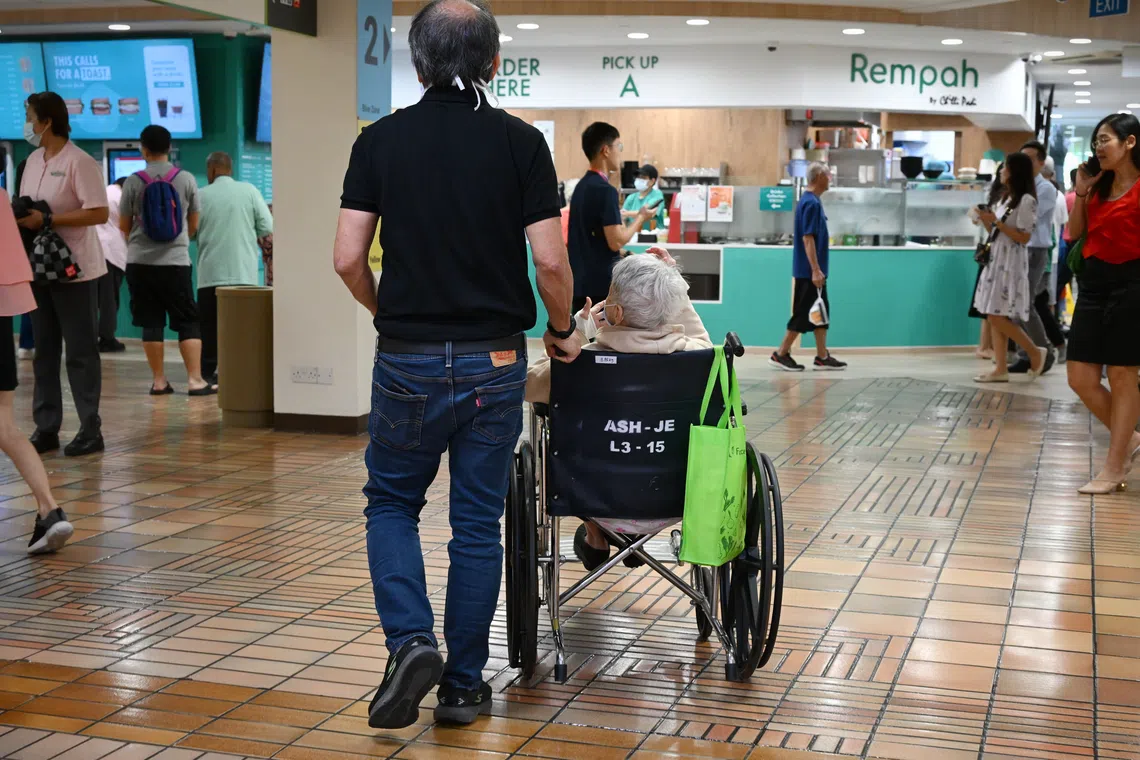No future without care: Closing Singapore’s long-term care gap
Financial tools must evolve alongside medical and social care so families are not left to shoulder the burden alone
WHILE longevity is a gift, Singapore’s increasing life expectancies also bring new challenges, and we need to be prepared for the financial and social realities that come with longer lives.
In his Sep 24 Parliament address, Prime Minister Lawrence Wong acknowledged the need to update national systems to reflect demographic changes, particularly increased lifespans. He noted that the government will be studying ways to further strengthen retirement adequacy.
His message is clear: With longer lives, planning for retirement becomes more important than ever. Beyond meeting basic retirement needs, individuals and families also need to prepare for other expenses that come with the broader realities of ageing.
The growing reality of long-term care and caregiving
Longer lives do not always mean healthier lives. Many Singaporeans spend their later years managing chronic illnesses, frailty or disabilities. On average, a decade of life is lived in poor health, and half of healthy 65-year-olds are at risk of developing severe disability, needing help with at least three activities of daily living, such as bathing, eating or moving around.
Mr Tay’s story is more common than we realise. At 68, a stroke turned him from retiree into care recipient overnight. His wife and adult children became full-time caregivers, rearranging work schedules and finances to support his rehabilitation.
His experience mirrors what many households face. Long-term care is not a distant risk, but a reality that can upend daily life without warning.
“Longer lives do not always mean healthier lives. Many Singaporeans spend their later years managing chronic illnesses, frailty or disabilities. On average, a decade of life is lived in poor health, and half of healthy 65-year-olds are at risk of developing severe disability.”
As Singapore prepares for a future shaped by longevity, artificial intelligence (AI) and technology can enhance business operations and service delivery. But without a comprehensive care foundation that supports human well-being, there is no sustainable future.
True peace of mind comes from knowing care needs will be met, and that is the real value insurance must deliver in an ageing society. Long-term care is not a niche product; it is the future reality.
At Singlife, our claims data illustrates the scale of this issue. From 2010 to 2024, the average long-term care claim lasted 10 years, with some extending beyond 15 years. The leading causes of claims were stroke, cancer and neurological conditions such as Parkinson’s disease, dementia and Alzheimer’s disease.
SEE ALSO
The financing gap
Singapore’s national long-term care insurance scheme, CareShield Life, provides a basic foundation for long-term care financing. All Singapore citizens and permanent residents born in 1980 or later are automatically covered under CareShield Life upon turning 30, and will receive lifelong payouts if they become severely disabled.
But these payouts are designed as a baseline and do not fully cover the actual cost of care, which averages nearly S$3,000 a month, according to the 2024 Singlife Long-Term Care Survey. Over the years, this can accumulate to hundreds of thousands of dollars, creating a significant burden for families.

Ms Lim, a single mother in her 50s, was diagnosed with early-onset Parkinson’s disease. Despite CareShield Life payouts, her family still needed to cover additional caregiving services and mobility support. Without supplementary coverage, they found themselves dipping into retirement savings earlier than planned.
This is where supplementary coverage plays a critical role. CareShield Life supplements provide higher monthly payouts on top of the national scheme, helping to cushion the financial impact. Yet, only one in three Singaporeans aged 30 and above has bought such a plan.
Spotlight on dementia
Dementia is now the fifth leading cause of disability in Singapore. Unlike many other conditions, it brings unpredictable and often escalating care needs that extend over the years. Families face not just financial costs, but also the emotional and practical strain.
Singlife’s 2024 Dementia Care Survey highlights the pressures caregivers experience – 44 per cent struggle with their own emotions; 41 per cent say the financial burden is significant; and 37 per cent focus most on managing the emotional needs of their loved ones.
One caregiver shared how difficult it was for her and her siblings to watch their mother, once a strong career woman and their hero, become reliant on them – sometimes sad and apologetic, other times, defensive and irritable. “It was especially hard when she started forgetting who we were,” she said.
Beyond the emotional strain, the siblings also faced significant financial responsibilities, from recurring costs like medical tests, regular appointments, daily medication, hiring a helper and diapers, to one-off expenses such as a hospital bed, wheelchair, commodes and equipment for feeding or transfers. Wheelchair-supported transportation costs around S$40 per trip, while nursing home fees range from S$3,500 to S$4,000 a month.
“Families who prepare ahead financially and practically are better able to make informed decisions, access the right resources, and protect both care recipients and caregivers from unnecessary strain.”
To address this, Singlife introduced the market’s first insurance plan offering annual payouts specifically for persons living with dementia. By covering cognitive decline, mental health conditions, and accidental burns and fractures, the plan helps families alleviate some of the financial challenges of dementia.
This focus on dementia reflects a broader reality. As Singapore’s population ages, we will need more specialised solutions to address evolving health risks. Financial tools must evolve alongside medical and social care so families are not left to shoulder the burden alone.
Support caregivers
But financial protection alone is not enough. Caregiving is often a marathon that stretches over many years, involving families who juggle responsibilities across work, education and other commitments.
One caregiver we interviewed lamented: “People forget that I’m actually a caregiver to six people, my four kids and two elderly parents. I’m busy with my children and helping them with their schooling, too. I can’t remember the last time I had time for myself.”
To ease this burden, Singlife launched the Caregiver Support Pack in collaboration with Diabetes Singapore, Home Nursing Foundation, Singapore Cancer Society and the Singapore National Stroke Association. This initiative provides resources to support caregivers’ emotional and mental well-being, reinforcing that care must extend beyond payouts to holistic support.
From awareness to action
Long-term care is a journey that touches not just individuals but entire families, often for many years. Yet it remains largely invisible until it becomes urgent. That is why early planning is critical. Families who prepare ahead financially and practically are better able to make informed decisions, access the right resources, and protect both care recipients and caregivers from unnecessary strain.

The stories of Mr Tay, Ms Lim and countless others remind us that long-term care planning is not only about numbers. It is about giving families the strength to carry on, even in the most challenging chapters of life.
There can be no future without the well-being of our people. As we innovate with AI, technology and data to improve experience and delivery, we must also reimagine insurance itself: not just as a safety net, but as a lifelong partner in care. The future cannot wait.
The writer is group chief executive officer, Singlife. This column has not been reviewed by the Monetary Authority of Singapore. Protected up to specified limits by SDIC.
Decoding Asia newsletter: your guide to navigating Asia in a new global order. Sign up here to get Decoding Asia newsletter. Delivered to your inbox. Free.
Copyright SPH Media. All rights reserved.







